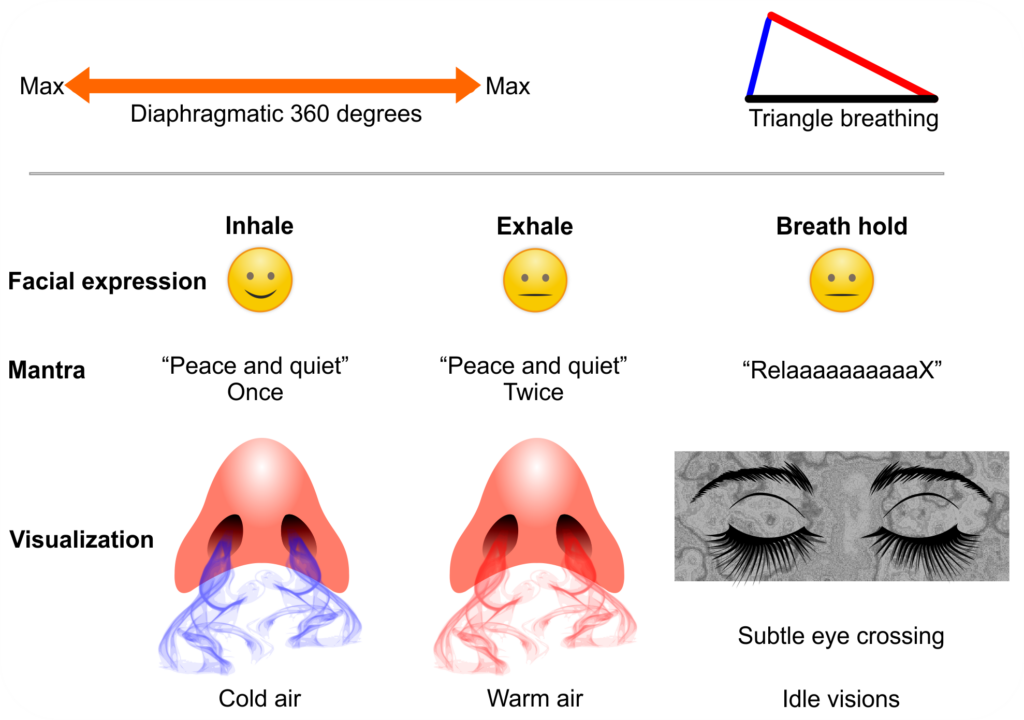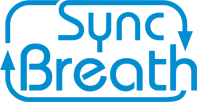Vapor breathing

‘Vapor breathing’ combines ‘diaphragmatic smile-breathing’ with a visualization of cold Air (blue vapor) entering my nostrils when I inhale and warm Air (red vapor) exiting my nostrils when I exhale. I use my mantra “Peace and quiet” to time my inhale and exhale. I repeatedly hold my breath until I gently reach the point of ‘air-hunger start.’
I use a dedicated mantra for my breath holds; the word “Relax.” When I recite my breath-holding mantra “Relax,” I extend the ‘a’s while holding my breath and end with the ‘x’ as I gently reach the point of ‘air-hunger start.’ The result is a mantra that sounds like “Relaaaaaaaaax.”
How I exercise ‘vapor breathing’
Directives:
- I sit comfortably with a straight back, close my eyes, and keep my tongue and jaw relaxed.
- Reset my breathing if needed.
- Use diaphragmatic breathing and breathe exclusively through my nose.
- Inhale, while visualizing cold Air, in a shade of blue, entering my nostrils while reciting my “Peace and quiet” mantra once.
- Exhale, while visualizing warm Air, in a shade of red, leaving my nostrils while reciting my “Peace and quiet” mantra twice.
- Hold my breath, reciting my breath-holding mantra, “Relaaaaaaaaax.” I add a subtle eye-crossing and concentrate on my idle visions, until I gently reach the point of ‘air-hunger start.’
- Repeat for a few rounds.
I tend to engage my abdominal muscles when I exhale diaphragmatically. Once I complete the exhale, I monitor whether my abdominal muscles are fully relaxed. If they aren’t, I relax them.
As I commence the breath-holding, I add a subtle eye-crossing. This action allows me to increase my concentration and slightly delay the onset of air-hunger. Since I shift in and out of the eye crossing (doing it only while holding my breath), I reduce the intensity of forehead pressure that often comes with prolonged eye-crossing.
In my idle visions, I check for any pulsating areas on my ‘screensaver’ (particularly at the bottom). I also check that my tongue is encompassed and relaxed. The indications that signify I’m ready to move on to the next exercise are the absence of pulsations on my ‘screensaver,’ a relaxed tongue, and a noticeable slowdown in my breathing tempo.
The shifting in and out of smiling contributes to my relaxation and helps me in moving my diaphragm to reach maximum amplitude repeatedly. The relaxing feeling naturally fluctuates, particularly as I shift out of the breath-holding and into the inhaling. In the next exercise, I aim to reduce the fluctuations in relaxation even further by eliminating the breath-holds.
